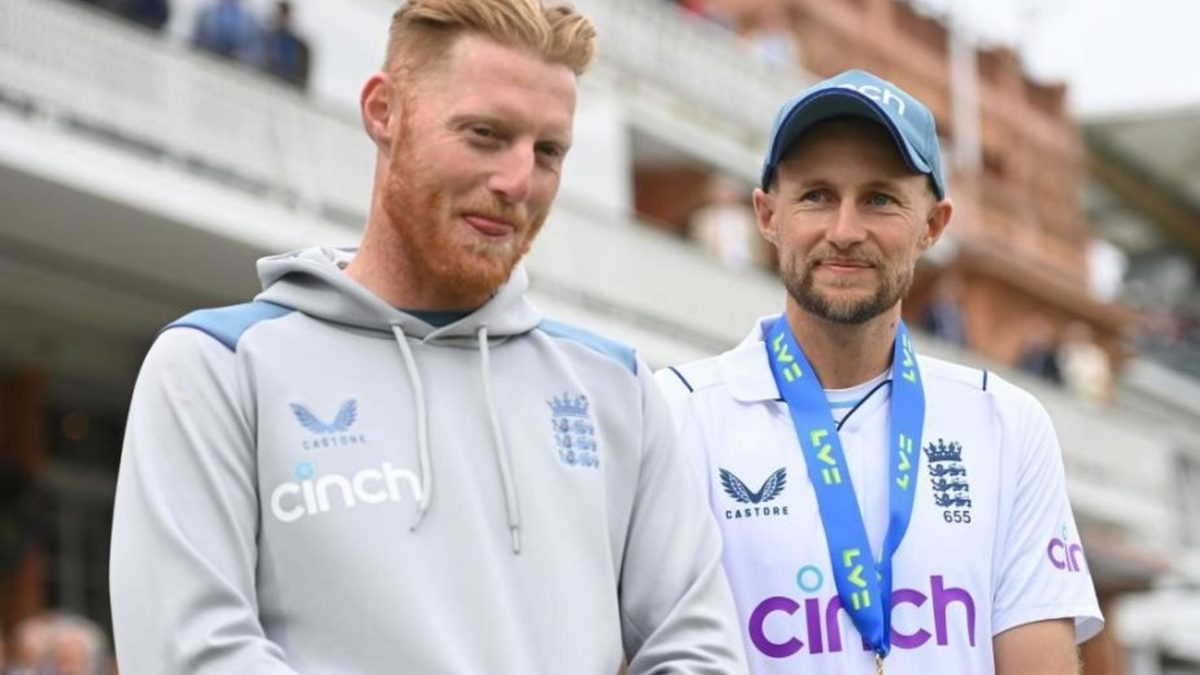
Taha Hashim reports from Lord’s after England secured a five-wicket win over New Zealand in .
Just minutes before lunch on day three, Ollie Pope walked out to join Zak Crawley at the crease with England 31-1, chasing 277. Forty-six Test appearances between them, but two players still trading on potential. Oddly enough, this was just the third time the pair had batted together in Test cricket; Crawley’s struggles up top have stopped him from having any real fun with the middle order. This felt like a significant moment, something for the McCullum-Stokes era to get behind: England’s two most promising batting talents being tasked with building a partnership of substance in the fourth innings. Pull it off and suddenly all those questions begin to disappear, newfound confidence kicks in, and it becomes easier to talk about a brand new age for this Test side.
Instead, there came a dose of cold hard reality. Kyle Jamieson towered over Crawley in the battle of six-foot somethings to take the outside edge. Trent Boult channelled Akram in ’92, going around the wicket to uproot Pope’s off stump. Crawley finished with nine, Pope scored 10, and their partnership was worth just 14. Bairstow counter-attacked but was done by his great nemesis, the nip-backer. It was the same old story: Stokes and Root, can one of you get the job done?
The new captain meeting the old one – the mind went back to this same ground seven years ago when Stokes and Root saved England in the first Test of the season against Brendon McCullum’s New Zealand. From 30-4 on the opening morning, the pair countered with a stand of 161 off 194 balls. Stokes followed up that first-innings 92 with the fastest Test century at Lord’s and Root climbed to the top of the Test batting rankings a few months later. Like Crawley and Pope now, both were 24 years young that summer. They were the present and future.
For all the talk of a red-ball reset or “blank canvas”, one thing has remained constant in English cricket this week: Stokes and Root still have to do most of the work with the bat. Their partnership of 90 on day three changed the mood of the occasion. Stokes’ innings of 54 was bizarre: a concoction of luck and bravado, with a little bit of genius in there too. He routinely advanced down the pitch to the quicks only to find anywhere but the middle of the bat. On one, he danced forward and chopped on off Colin de Grandhomme’s bowling. New Zealand were on their way to victory – but de Grandhomme had overstepped. Granted another life, Stokes continued to be adventurous; his first boundary was a wild slash over the slip cordon. He was at his best against Ajaz Patel; the left-arm spinner bowled two overs in the match and Stokes sent him over the leg-side boundary three times. An upper-cut gone wrong off Jamieson was a fitting end to a manic innings.
It was with the departure of Stokes that Root turned the volume up on his knock. From 34 off 89 before Stokes’ innings, Root hit 81 off his next 81, taking the lead in his crucial stand with Ben Foakes. His aggression was different to that of Stokes, revolving around finding the gaps and running hard. That proactiveness was immediate on the final day, when he shuffled across the crease and began with a tuck off the hips for one. He moved to his ton and 10,000 Test runs with the same stroke, and raced to the win in a hurry with some glorious final touches: a delicate dab to the third-man rope, a drive through mid-off, a final pull to celebrate England’s first Test victory since Headingley last year.
Since the start of 2021, Root has hit nine hundreds in 21 Tests. That’s ludicrous. Leaving the captaincy behind has lifted a big weight, something he admitted in his post-match press conference. “It had become a very unhealthy relationship, to be honest, the captaincy and me. It started to really take a bad toll on my own personal health. I couldn’t leave it at the ground anymore.” This was the perfect start to life back in the ranks, and much needed. A sprinkling of McCullum positivity hasn’t immediately solved the top-order issue, which means Root must continue to do what he’s doing: score run after run to keep this team functioning.
His relationship with the new leader makes for an enthralling batting combination: Stokesian audacity meeting calculated relentlessness. Two mates who have been through it all together, from the age-group knockabouts to here. Even today, as Root spoke with a medal around his neck, Stokes was at the back of the room, listening in before his go with the press. If there’s one thing still missing in their story, it’s timing. When Stokes tore it up in 2019 and 2020, Root had a lean couple of years (by his standards). While Root averages 56.2 in Tests since the start of last year, for Stokes the number falls to 26.46. There’s still time for both to click at the same moment.
Basic truths haven’t changed for this side in the last few days. Stuart Broad and James Anderson are still immense competitors, the all-timers you have to squeeze every last drop out of before it eventually comes to an end. An England batting collapse is always waiting around the corner. And seven years on from that game-changing stand at Lord’s, Stokes and Root remain the present and future.








